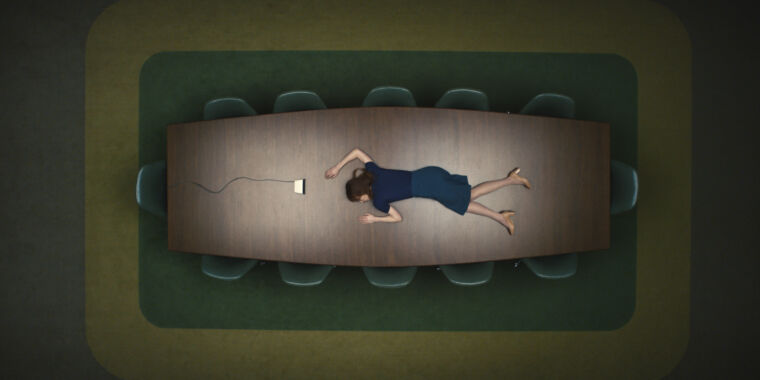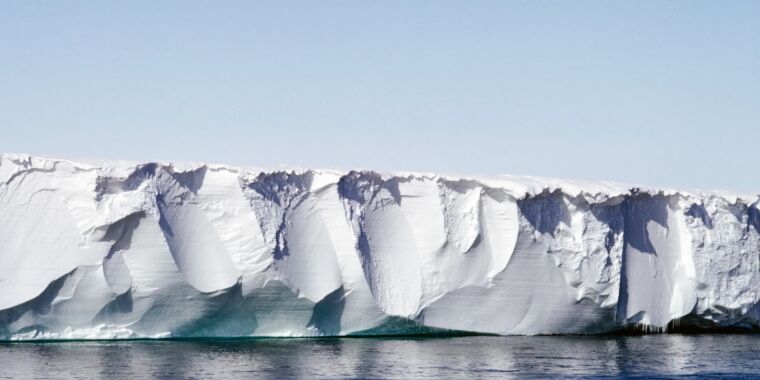
To outsiders, geology can seem as dull as a rock, with a lexicon just as opaque, but to insiders, it is a limitless source of wonder. Various authors have used different tools to crack open geology’s dull exterior to show non-geologists the sparkling wonders within: Robert Hazen used color; Jan Zalasiewicz used a pebble; and Richard Fortey used a railway journey, for example.
Marcia Bjornerud uses words to unlock the mysteries of geology the way a video game might use gems to unlock a new level to explore. Her new book is a buffet of bite-size chapters perfect for dipping in and out of, read in no particular order. Geopedia is structured like an encyclopedia to the extent that its topics are arranged alphabetically, but it’s written for enjoyment rather than as a mere fact-reference.
Bjornerud keeps the reading light even when serving up expanses of time and space, and she follows each geological ‘dish’ with a chaser of pointers to other entries that may be related, if only tangentially. After “Amethyst,” for example, she suggests “Kimberlite,” a diamond ore, and “Pedogenesis,” the process by which soil is made.
Geological buffet
Each chapter is its own taster-menu. Under “Amethyst” I learned that ancient Greeks believed Amethyst crystals protected wearers from getting drunk. From there, Bjornerud jumps to the definition of a mineral, to limestone locking away atmospheric CO2, and on to atomic impurities giving color to crystals; she hops from topic to topic like a geological Mario jumping between platforms in a video game.
The “Tully Monster” (a real creature from 310 million years ago) takes us via Star Wars Episode IV’s “cantina scene” to ongoing controversy over where it fits in the animal kingdom. “Oklo” links a 2 billion-year-old nuclear meltdown to the rise of oxygen in Earth’s atmosphere (your granite countertop is slightly radioactive, Bjornerud mentions in passing).
The topics include those I would expect (like Anthropocene, Unconformity, Moho, etc.), but Bjornerud has gone out of her way to include the odd (Geophagy, anyone?) and curiosities like salt glaciers and mud volcanoes. She has also unearthed words obscure even to geologists (until Geopedia, I thought a Yazoo was a 1980s synth-pop group).
Nibbles of big ideas
The book could easily have been just a frothy collection of trivia, but Bjornerud skillfully feeds the reader nibbles of geology’s meatier concepts like deep time, plate tectonics, and the co-evolution of life and our planet. Subjects that could become technical are lightened by everyday analogies (brittle failure likened to a “run in hosiery,” or uranium precipitating “like a busload of passengers forced to disembark,” for instance).
She also maintains a human connection. In “Geodynamo,” we learn how Danish geophysicist Inge Lehman (a rare woman in that field then) identified Earth’s inner core in 1936 thanks to a large earthquake in New Zealand. While explaining Earth’s magnetic field, Bjornerud observes that while there’s no clear evidence magnetic field reversals cause extinctions, one today would be “debilitating” for humans. In another example, she describes a 1929 earthquake off shore of Newfoundland that triggered an immense submarine landslide, resulting in a tsunami that killed 28 people. Severed undersea communication cables tipped us off to this unseen hazard and provided an explanation for hitherto unexplained sediments called “turbidites.”
Quirky gem
The tone of Geopedia is quirky—I never expected to go from “Karst” to mass executions in World War II or from “Snowball Earth” to the Norse myth of Ymir and his rock-licking cow. It can sometimes be whimsical, like when Bjornerud portrays Earth’s most ancient rocks as a matriarch she dubs “Old Acasta.”
Haley Hagerman’s black-and-white drawings complement that quirky tone. On one page, you’ll find a rendering of a microscope thin-section that’s like an abstract composition; on another there’s a polar bear with a sign saying “North Pole Was Here.” An intricate rendering of Amethyst crystals is followed by a dog with a bubbly body of basalt.
The Bjornerud-Hagerman partnership reprises their 2018 book Timefulness: How Thinking Like a Geologist Can Help Save the World, which was Shortlisted for the Phi Beta Kappa Award in Science and was a finalist for the 2019 Los Angeles Times Book Prize in Science & Technology; it also won the 2019 PROSE Award in Popular Science & Popular Mathematics, among other accolades. Geopedia seems destined for similar praise.
Its pocket-size format makes it perfect as a traveling companion, and its short chapters suit our frazzled attention spans, making it a fun alternative to night-time doomscrolling or heavier nonfiction. No matter if you’re a hard-core rockhound or a geological outsider, you’ll get something worthwhile from this little gem of a book.
Howard Lee is a freelance science writer focusing on geology and climate change in deep time. He holds a B.Sc. in Geology and M.Sc. in Remote Sensing, both from the University of London, UK. When not writing, he’s probably gardening, hiking, or kayaking near his home in rural Massachusetts.








